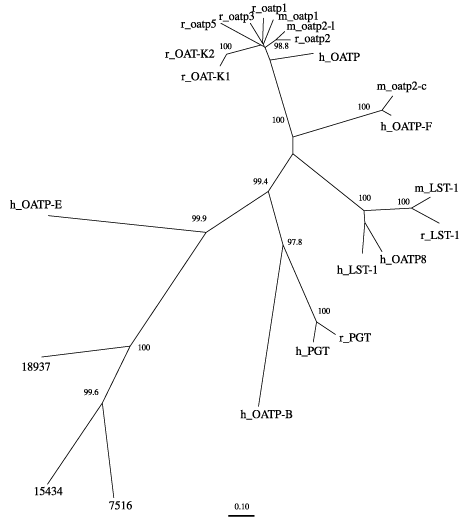| Supplementary Figure 3B. Alignment
of the amino acid sequences of the known OATPs (h: human, m: mouse, r:
rat, h_OATP, GenBank
U21943;
h_OATP8, AJ251506;
h_OATP-B, AB020687;
h_OATP-E, AB031051;
h_OATP-F, AF260704;
h_LST-1, AF060500;
h_PGT, U70867; m_oatp1, AB031813;
m_oatp2-c, AY007379;
m_oatp2-l AB031814;
m_LST-1, AB037202;
r_oatp1, L19031;
r_oatp2: U88036;
r_oatp3, AF041105;
r_oatp5, AF053317;
r_OATP-K1, D79981;
r_OATP-K2, AB012662;
r_PGT, SwissProt Q00910)
and new members (RIKEN Seqid 7536,
15434
and 18937),
which was constructed using CLUSTAL W and CLUSTAL X viewer. The 12 putative
transmembrane segments (red bars I to XII) were assigned on the basis of
hydrophobicity analysis and sequence similarity. The region of the motif
we detected is presented as a blue bar. |







